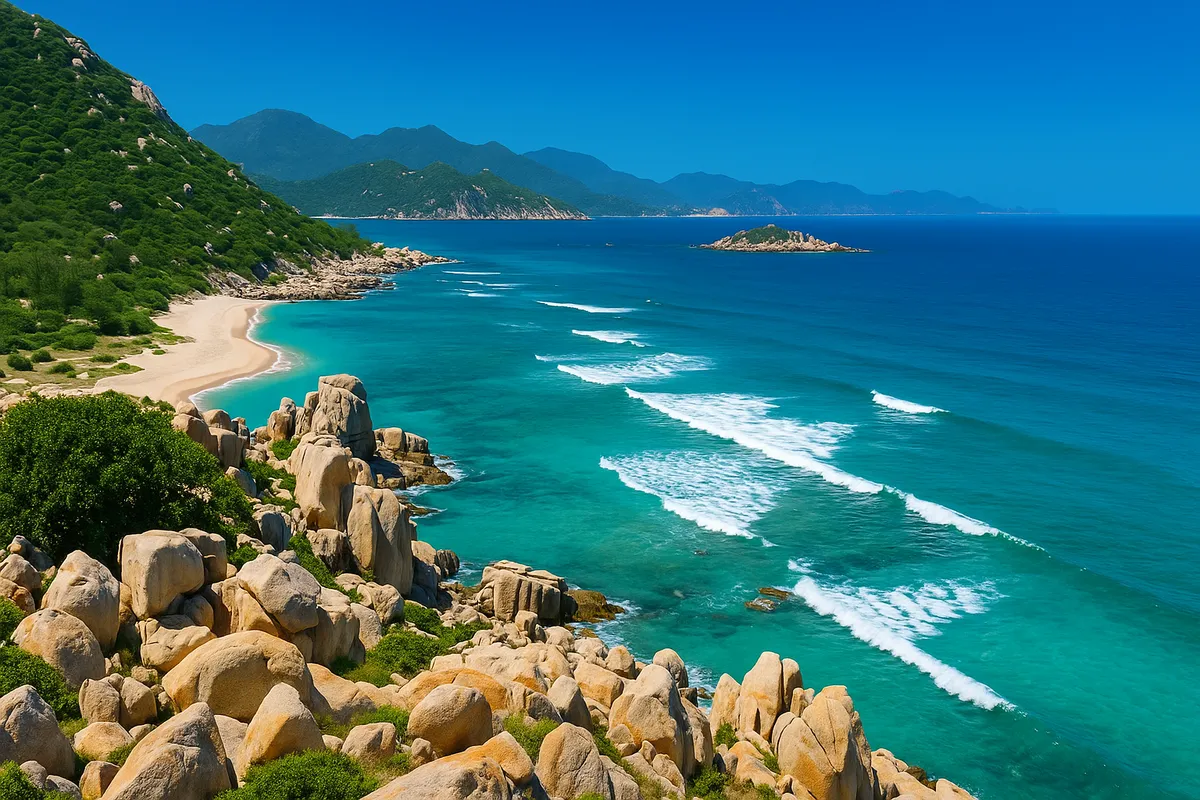Vietnam stands out as Thailand faces tourism crisis
- Wednesday, Jun 18, 2025, 19:23 (GMT+7)
Vietnam stands out as Thailand faces tourism crisis
Thailand’s tourism industry is entering a period of notable difficulty in the first half of 2025, with various indicators showing a downward trend and visible stagnation across its system. Once considered the leading destination in Southeast Asia for international travelers, Thailand now faces the challenge of restructuring its tourism market and operational models as major source markets no longer deliver the expected growth.
In the first quarter of 2025, the number of tourists from China, South Korea, and Hong Kong visiting Thailand declined significantly compared to the same period last year. China, previously Thailand’s largest source market, recorded a drop of over thirty percent, while other Northeast Asian markets also underperformed. This points to an overdependence on a limited number of markets, now becoming a structural vulnerability in the country’s tourism development model.
At the same time, the spending behavior of tourists in Thailand is shifting. Travelers are now cutting costs, opting for shorter trips and managing tighter budgets. Meanwhile, service prices in major Thai cities continue to rise, creating an imbalance between the value provided and customer expectations. Some international travel agencies have noted that the average price of package tours in Thailand has surpassed what is considered attractive for the mid-market Asian demographic.
In response to these challenges, Thailand has announced a stimulus plan involving hundreds of millions of dollars to upgrade infrastructure, improve service quality, and revise market promotion strategies. The country aims to reframe its tourism industry with a more sustainable focus, targeting higher-spending visitors who stay longer and engage with value-added services.
Meanwhile, Vietnam is emerging as a favored destination due to strong progress in policy, service standards, and organizational capacity. In the first five months of 2025, international arrivals to Vietnam surpassed nine million, representing a growth of over twenty percent year on year. Notably, Chinese tourists reached approximately one point six million, outnumbering Chinese arrivals to Thailand during the same timeframe.
Vietnam is now attracting a broad range of markets without relying on any single group. Travelers from South Korea, Taiwan, Malaysia, the Philippines, and various European countries have all posted positive growth figures. This diversity reduces risk exposure and enhances adaptability in the face of regional market fluctuations.
A core factor driving Vietnam’s rise is its flexible visa policy and streamlined border procedures. Expanding the list of visa-exempt countries, implementing e-visas, and simplifying administrative processes have significantly enhanced convenience for foreign visitors. These are essential conditions for increasing competitiveness in a global tourism environment that demands seamless access.
Affordable travel costs are also a key advantage. According to surveys conducted by domestic travel agencies, average prices for package tours, accommodations, and food services in Vietnam are notably lower than in neighboring countries. This pricing structure aligns well with post-pandemic consumer behavior, where travelers seek meaningful experiences without excessive expenditure.
Service quality in major tourism hubs such as Hanoi, Ho Chi Minh City, Da Nang, Nha Trang, and Phu Quoc has improved markedly. Local governments have proactively developed their own evaluation frameworks for accommodation and tourism services, helping to establish consistent standards and reduce variability across different market segments. Resorts, hotels, restaurants, and transport providers are being encouraged to invest in infrastructure, workforce training, and digital transformation.
Vietnam also benefits from a wide variety of destinations with strong cultural and natural appeal. From untouched landscapes to recognized heritage sites, from modern cities to traditional rural settings, travelers can choose from a rich array of tourism styles without repetition or fatigue. This diversity not only increases the average length of stay but also motivates repeat visits with fresh experiences.
On the promotional front, Vietnamese tourism authorities and businesses have coordinated closely to run effective international marketing campaigns. Participation in global fairs, seminars, and industry events has been conducted systematically and in depth. As a result, Vietnam’s tourism image is increasingly present in mainstream media and international tour distribution networks.
During the summer of 2025, Vietnamese travel operators report strong growth in international tour bookings, especially for outbound routes to Asia, Europe, and the Middle East. This is a positive signal that Vietnam is not only maintaining its recovery momentum but also gradually expanding its market share in new territories.
Vietnam currently possesses three foundational strengths: stable policy, diverse markets, and solid implementation capacity. This is the right time to focus on strategic investments in regional infrastructure, airports, seaports, and reception centers that meet international standards. Simultaneously, professional training for tourism staff, language development, and service skills should be enhanced across the country.
From a rising destination, Vietnam is progressively repositioning itself on the regional tourism map. A shift from volume-based to quality-based tourism development will create long-term and sustainable value for the national industry. While Thailand continues to adjust its internal structure, Vietnam has a real opportunity to become the next tourism center of Southeast Asia if it maintains a clear strategic direction and synchronizes efforts across all levels of governance and industry.

 CHECKIN.VN
CHECKIN.VN








Share on